
LIVING LABS






“These regulations were a frustrating distraction that undermined goodwill.” – Jason Herrick, Southland


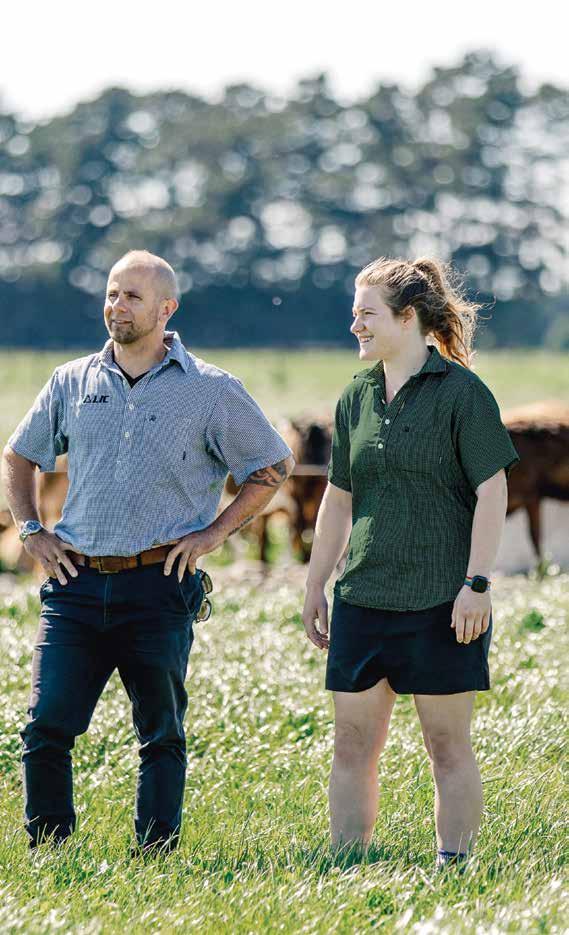
You’re looking forward to the end of the season; getting the dry off done and you’re starting to think ahead.
Now’s the time to start making some good calls with your mating plan for next season.
Choosing female sexed semen can help you breed the best cows, faster. By generating heifer replacements from your best performers, you can maximise cow efficiency which also helps reduce your emissions intensity. And selecting fresh over frozen is best – with Premier Sires® sexed semen teams delivering near normal non return rates.
So, before the cows dry off, put your best foot forward for next season and lock in your sexed semen order.
Talk to your Agri Manager today about sexed semen or visit lic.co.nz/sexedsemen
There's always room for improvement

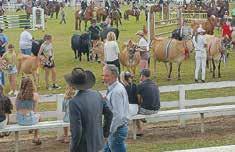
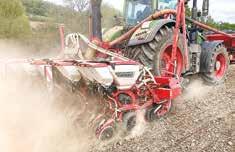
SOUTHLAND FARMERS are welcoming moves by the Government to repeal intensive winter grazing rules.
Federated Farmers Southland junior vice president and dairy farmer Jason Herrick says, not just for dairy farmers but every farmer using winter grazing, it is welcome news.
“We are glad to see these changes being made quickly, although unfortunately not in time for 2024 winter,” he told Dairy News
Herrick points out that some farmers will be disappointed, having to “go through the unnecessary, pointless consenting process”.
He says the winter grazing rules introduced by the previous government were unnecessary.
“Farmers had already made significant changes and these regulations were a frustrating distraction that undermined goodwill,” he says.
“The fact that common sense is finally prevailing will be a welcome relief though.”
Herrick’s message for farmers is to carry on showcasing good winter grazing practices.
“As a whole, the whole industry is as good as the bottom 5%. My message to farmers would be to carry on showing good practice and continue to innovate as we always have, to continue the improvements made to date.
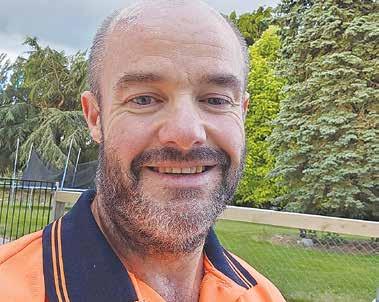
“The risk of poor practice didn’t change because of a consent process – that just put those who do the right thing through a whole lot of needless bureaucracy.”
DairyNZ general manager farm solutions and policy Dr David Burger believes farmers can focus more on continuing to improve their wintering practices, through appropriate farm and catchment level solutions, rather than being concerned about national regulations, and associated costs, that may not be effective for their situation.
At the same time, DairyNZ encourages dairy farmers to check their regional council rules to ensure they still meet local regulations, which are additional to national rules.
Burger notes that current rules and consent requirements will also
remain for the current 2024 winter season but be removed for the 2025 season.
“Dairy farmers have made significant improvements with their wintering practices in recent years, lifting the standards of animal care while working hard to protect the environment. We expect these improvements to continue.”
Repealing intensive winter grazing rules is one of five changes included in the first Resource Management Act Amendment Bill to be introduced by the Government in May. The National Policy Statement for Freshwater Management (NPSFM) is being reviewed and replaced, stock exclusion regulations in relation to sloped land will be amended and the NPS-IB requirement for councils to identify new Significant Natural Areas (SNAs) suspended
for three years. The fifth change is aligning the consenting pathway for coal mining with the pathway for other mining activities in various regulations.
Agriculture Minister Todd McClay says Cabinet has agreed changes to stock exclusion and winter grazing regulations, representing a move to a more risk-based, catchment-focused approach.
“We’re proposing to remove the problematic and contentious low slope map and for regional councils and farmers to determine where stock need to be excluded, based on risk. The focus is on farm-level and regionally suitable solutions. This will reduce costs for farmers.
“Importantly, effective nonregulatory measures are already in place to support the continued improvement of winter grazing practices going forward.
“Sector groups have confirmed their continued and collective commitment to work alongside farmers and regional councils to ensure good outcomes.
“Regional councils tell us there have been significant improvements in winter grazing practices, with farmers changing where they plant fodder crops and how they manage winter grazing.
“The national requirement for farmers to obtain prescriptive and expensive winter grazing consents is being removed in time for the 2025 season, and instead being managed through good practice and regional council plans,” McClay says.

CASH FLOW budgeting is going to be critical for dairy farmers in the coming season.
That’s the sage advice from AgFirst director and respected dairy advisor James Allen. He says budgeting for next season is going to be difficult because it’s hard to forecast what the payout might be. He says it’s a case of budgeting low, hoping for better, and that he wouldn’t be budgeting more than $8/ KgMS.
Allen says farmers have been pretty good at managing their costs and appear to have kept their cheque books locked away, as many machinery salespeople will attest to. He says one thing that has helped farmers this season has been the quite
“Going forward for next season there will be no lift in the advance payments for some time.”
significant capital distribution by Fonterra of 50c/kgMS and some good dividends.
“So, from a cash flow perspective it assisted massively, and the other thing is the advance payments which have that assisted cash flow now. However, going forward for next season there will be no lift in the advance payments for some time,” he says.
Allen’s comments come at a time when there is what he describes
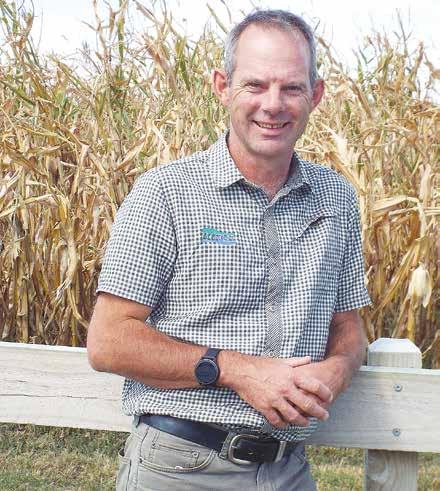
dairy farmers. He
– a definite
positive.
“The challenge for everyone is that the interest rates are high, and they are going to remain high for at least another six to twelve months. For anyone with a high debt level, it’s pretty challenging out there, despite the fact we have got through this season with a lift in the payout and reasonable production,” he says.
In terms of the season, weather-wise it’s been a bit of a mixed bag and Allen says a lot depends on what region you are talking about.
He says the lower North Island and Northland have been dry with pasture covers and growth rates below average, but not at disastrous levels. He says many were expecting a significant El Nino season, but this didn’t eventuate.
“In the Waikato we have ended up with a
pretty good summer with good grass growth levels, excellent maize yields and consequently good reserves of supplements, so here in the Waikato, things are looking really good,” he says.
But with relatively good conditions nationwide, Allen says the focus for dairy farmers now must be protecting the coming season.
“It’s about drying off at the appropriate time so that you are protecting your cow condition and covers for next season rather than rolling the dry spell into next season,” he says.
Allen says although there has been something of a lift in farmer optimism, the path ahead is challenging and he says the focus of farmers must be on planning for whatever might happen.
as the changes have caused a lot of concern out there,” McIntyre told Dairy News
Minister Erica Stanford two weeks ago expressing concern. A Feds delegation met Stanford last week.
FARMERS HAVE been airing their concerns to the Government over changes to the Accredited Employer Work Visa scheme.
Federated Farmers dairy chair Richard McIntyre says farmers aren’t happy with the changes and are worried they won’t have staff for the new season, four weeks away.
“It is fair to say the phone has been off the hook the last few weeks
While farmers understand that change is needed, as the record immigration numbers aren’t sustainable, McIntyre points out that the way the changes have been implemented is the issue. It has many farmers fairly confused as to what the changes mean for them.
“Some are pretty anxious that come June the 1st they may not have staff for the new season.”
Feds wrote to the Immigration

“The Minister understands the concern that the changes have caused and was very open to what we had to say,” he says.
“We have been clear with the Minister that it’s not fair to undermine provincial New Zealand’s labour force to solve an urban infrastructure and unemployment issue.
“There are a few areas we want to continue to talk on, but it is early days yet so it’s about having an on-going

dialogue to work through some of the issues that are there.”
Changes announced to the AEWV scheme came into force immediately and will make things a lot harder for farmers bringing in staff from oversees. The changes include a shorter visa length of two years with a maximum continuous stay period of three years, and the introduction of a 12-month stand-down period at the end of the visa.
There are also new minimum requirements when it comes to skills, work experience, advertising roles,

and engaging with Work and Income. McIntyre says Federated Farmers does not support many of these changes as they could put farmers in a difficult and unforeseen situation where they are unable to fill roles on farm.
Staff shortages can have a huge impact on health & safety, mental wellbeing, and animal welfare, he adds. “There is also a risk that the stand-down requirement will create a situation where skilled employees, who farmers have invested in, are picked up by other countries.”

of the highest and most aggressively rising OCRs we’ve ever had in history”.
ASB HEAD of rural bank-
ing Aidan Gent is encouraging farmers to speak to their banks when they are struggling.
He says that those farmers who need assistance from their bank should “pick up the phone, ping us an email”.
Gent, who is himself a farmer, says that farmer satisfaction is at an alltime low.
“It certainly has been a challenging time on farm at the moment and we really, really are doing all we can to support our customers,” he told Dairy News
Gent says farmers are seeing a culmination of low product prices and record on-farm inflation, accompanied by “one
All of that adds up, he says.
“No doubt that’s putting a lot of pressure on, especially when you look at the on-farm inflation challenge.”
Gent says that, historically, in these sorts of scenarios, farmers have tightened their belts. However, this time around, higher levels of cost inflation have meant that cutting costs isn’t working as well as it once did.
Additionally, sustainability is now becoming a major challenge on-farm.
Gent says there’s currently a lot of talk surrounding emissions and efficiency.
“But that’s quite challenging… because farm-
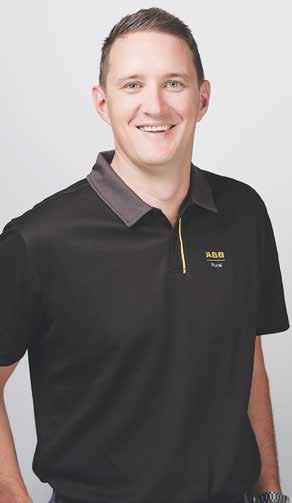
“It certainly has been a challenging time on farm at the moment and we really, really are doing all we can to support our customers.”
ers are struggling to think about how their next six months are going to go let alone how the business will look like in fiveor ten-years’ time,” he says.
He says that farmers have been put in a position where they can’t afford to not have that conversation because the sector needs to be futureproofed.
“So, it’s really a tough spot,” he says.
Gent says that initiatives like AgriZeroNZ –which the bank signed on to earlier this month –
are important to managing that.
“Ultimately, it’s about being a little bit brave inmarket too,” he says. “If you look at something like methane reduction, no one really knows the answer so we’ve got to start somewhere.
“We’ve got to start by having a conversation, starting to understand what science and technology is available and then figuring out what does and doesn’t work in the New Zealand farming system because no two farms are the same.”
He says you can’t assume that what works for one farm will then work for another. This, he says, makes the answer on things like methane reduction “a bit more challenging”.
Gent says that, for ASB, it is important that farmers are aware that the bank is available to assist in coming to a solution.
“I’m always concerned about those farmers who might be a little bit nervous to talk to their banks.
“We always ask that when times are tough on-farm to put up their hands and talk to their bank because it’s far easier to find a solution working with people than it is thinking you need all the answers before you talk to us,” he concludes.
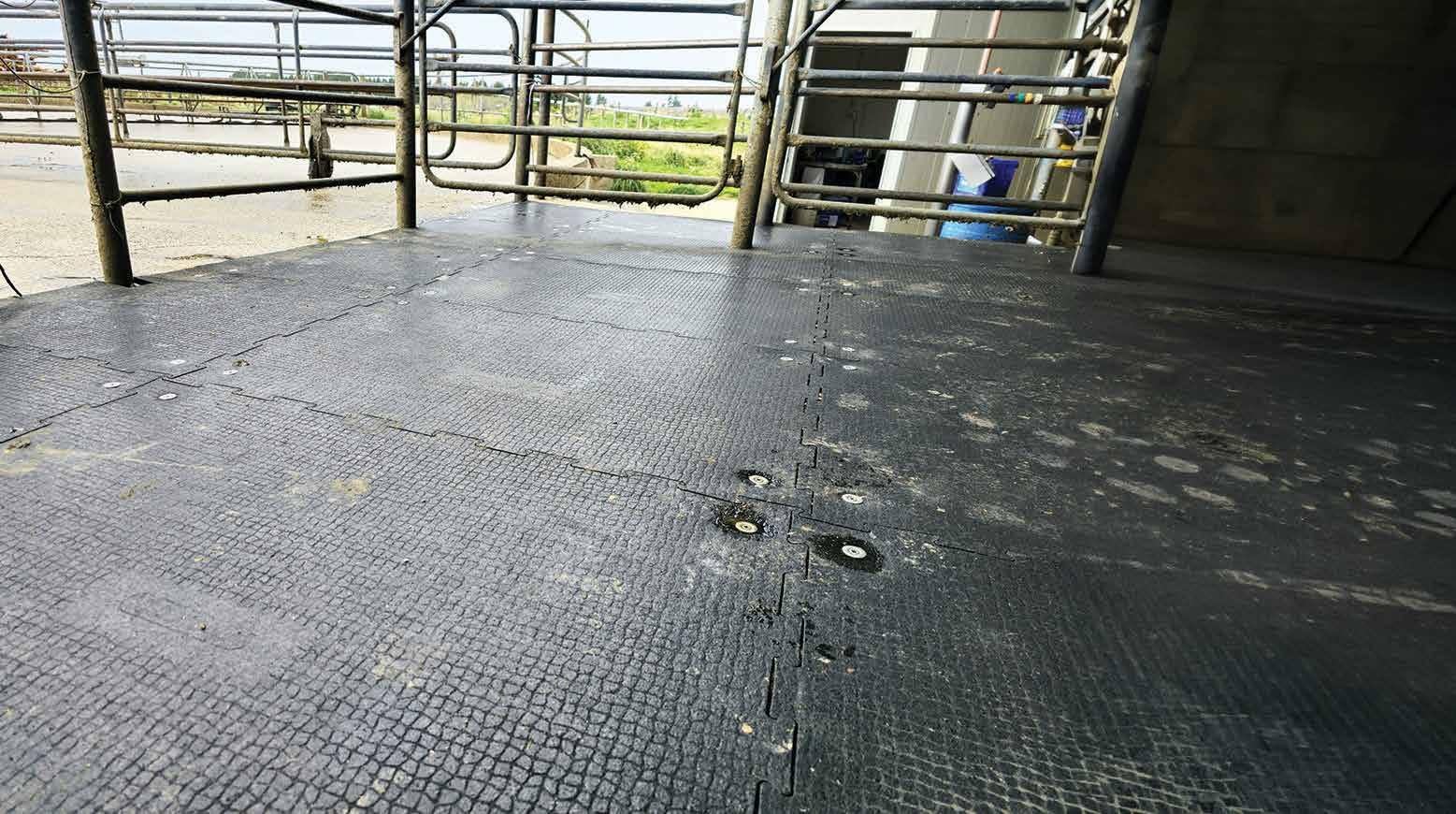


CHRISTCHURCH CITY
Council and the Canterbury Agricultural and Pastoral Association (CAPA) have signed an agreement which will open more of Canterbury Agricultural Park for public use while helping to provide longterm certainty for the A&P Show.
News of the deal comes hard on the heels of last week’s shock announcement by the Canterbury A&P board that its November show (known since 2018 as The New Zealand Agricultural Show) will not be held this year.
Citing financial pressures, the board said it would be unwise to proceed with a full-scale public show for 2024 but would plan for the return of “a new and exciting Show” in 2025.
The council has now announced a deal under which it has paid CAPA $5 million for the pur-
chase of the remaining 95 years of a 100-year lease on five hectares of council land on Wigram Road close to the Agricultural Park where the show is held. Council general manager citizens and community Andrew Rutledge says this agreement is beneficial to both parties.
“The A&P Show is such an important event for both the rural and local community, bringing people from around the country to our city.
“This agreement will support the future of the Show and the surrendering of the lease will allow us to use part of the land for additional sports fields in the south-west of the city,” says Rutledge.
Conditions of the deal are that CAPA uses $1 million to pay of its existing loan with the council while the remaining $4 million will go to a newly established, capital protected charitable invest-

ment Trust.
“The creation of a capital protected investment fund to be administered by the Trust will generate an ongoing revenue stream to support operational costs of running the show,” said Rutledge.
The Trust will begin operating in June.
However, the deal does not change the decision not to stage a public show this year, although livestock judging and competitions will still go ahead, as they did
through two Covid cancellations.
In a press release announcing the cancellation, board chair Stewart Mitchell said the association’s ongoing business model was under review.
“Twelve months of costs and three days of revenue is not a great business model by anyone’s analysis,” said Mitchell.
The Royal Agricultural Society believes the A&P movement remains very strong despite the cancellation of this year’s Can-
terbury show – usually the country’s largest.
Rachel Walker, the president of the Royal Agricultural Society, said she was saddened “like everyone else” to hear of the cancellation.
But talking to other A&P Associations up and down the country she was getting the “resounding message” that they were in a strong position, with good public interest in terms of spectator numbers and engagement.
“I’m hearing the word ‘record’ used a lot,” she said. “Canterbury is not necessarily indicative of the rest of the country in many respects because they have a very different business model and a very different structure.”
The RAS is a chartered organisation that oversees and supports 94 annual A&P shows and events across New Zealand plus a number of breed societies and the like.
“You talk to people up and down the country about their shows and they are very excited about them,” said Walker.
“They run shows that work for their community but they have very different situations and costs and the like, so you can’t look at the Canterbury situation and think it must apply around the rest of the country.”
Walker said Canterbury was unusual in operating as a much wider organisation than
purely running a threeday event. Other A&P Associations do not own or have responsibility for assets throughout the year but instead get access to grounds for a week or two, and then hand them back to the owner.
“It’s like trying to compare the Sydney Opera House with a local community hall.”
Mid-Canterbury Federated Farmers president David Acland said the Canterbury show was a big part of the community calendar and he looked forward to it being a big part of the calendar again in the future.
The November show came at a great time of year for farming families, when calving, lambing and even school and university exams were over, so they could look forward to a week to get into town to catch the show and the races.
“It’s not Show Week without the Show.”
NEW DATA released by LIC and DairyNZ shows New Zealand dairy farmers have achieved the highest six week in-calf rate and lowest notin-calf rate on record.
The average six week in-calf rate is sitting at 69.3% for the 2023-24 season, up 2.7% from last season (66.6%), while the not-in-calf rate is down to 15%.
The interim data, based on aged pregnancy test results from 4679 herds with a detailed DairyNZ fer-
tility focus report in LIC’s MINDA software, represents 2.5 million cows from across New Zealand.
On a national scale, the DairyNZ InCalf calculator estimates these reproduction improvements could create $130.7 million in extra milk revenue.
DairyNZ senior scientist Chris Burke said improved reproduction performance could also help farmers to lower emissions.
“Herd reproductive performance is
key in ensuring dairy farming success and in lowering methane emissions by reducing the number of non-productive cows. These results highlight the ongoing sector-wide opportunities to help farmers improve animal efficiency, to continue working towards emissions reduction goals.”
Jair Mandriaza, LIC senior reproduction solutions advisor, said this is great news for the dairy sector.
“From a national level, these results are very impressive and have
been welcomed after a couple of tough seasons.”
Mandriaza noted the submission rate (the number of cows that were mated in the first three weeks) also increased compared to last season.
“It seems many farmers have implemented improved management practices to overcome those tough seasons and, coupled with favourable weather in many parts of the country, are now reaping the rewards of their hard work.”
Fonterra’s group director for Farm Source Anne Douglas says the latest results are particularly encouraging.
“Animal efficiency can improve farm profitability as well as positively impact a farm’s emissions intensity profile, which is important for our co-op,” says Douglas.
“We provide several tools and services supporting farmers, including our tailored Farm Insights Reports, and appreciate the work that LIC and DairyNZ are doing in this space.”

shortage of vets as well as ongoing biosecurity and animal health and welfare.
FARMERS ARE being urged to make their veterinarians an integral part of their farm management team.
This is the advice of Britain’s Chief Veterinary Officer (CVO) Professor Christine Middlemiss who was in New Zealand recently for discussions with her fellow CVO’s from New Zealand, Australia, Canada and the US. The group meet once a year and NZ hosted the meeting this year.
Middlemiss says issues discussed this time round included microbial resistance, a world-wide
There is clear evidence that shows that vets are trusted independent advisors and can offer a lot more than just turning up to deal with a sick animal, she adds.
“They are not just your animal health team, but they are also your business team because we can work with farmers to prevent problems occurring on farm and this makes good economic sense. They can also offer good advice around nutrition and grass management,” she says.
Middlemiss says vets are also well clued up

on wider issues around farming through their links to their own professional body and government and industry organisations, and having the right information is key step to making the
right on-farm decision. She says the other positive that vets bring to a farming business is that their decisions and information is based on strong scientific evidence.
Meanwhile, Middle-
miss says one of the challenges facing the profession internationally is a shortage of vets and the fact that many are leaving the profession quite soon after they have graduated. She says this is despite the fact the number of graduates has increased. One of the reasons for the shortages in the UK, Middlemiss believes, is that during Covid, more people got pets for company which grew the demand for vets.
One somewhat puzzling statistic that Middlemiss points to in the UK is that 75% of those who stopped practicing as vets did so within four years or less after graduating.
“This doesn’t mean their skills are not being used. Some have joined the government food safety, others are working for pharmaceutical companies and jobs where their veterinary skills are very relevant,” she says.
Middlemiss says another reason for people leaving a veterinary practice may be long hours and the lack of a work-life balance. She says she’s also heard of instances where vets are sick of being shouted at and abused by demanding members of the public and that such stress is unbearable.
In terms of the public, Middlemiss says as Britain’s CVO and principal
advisor to the government on matters relating to animal health, welfare and related issues, she has developed close links with NGOs and relevant stakeholders. She says her office and the professional veterinary associations in the UK make a point of keeping the public and stakeholders well informed about what they do and what issues are in the pipeline.
But fundamentally, says Middlemiss, the veterinarian profession hasn’t changed over the years. She says vets are service providers and a key to that is being able to communicate the knowledge they have to clients.
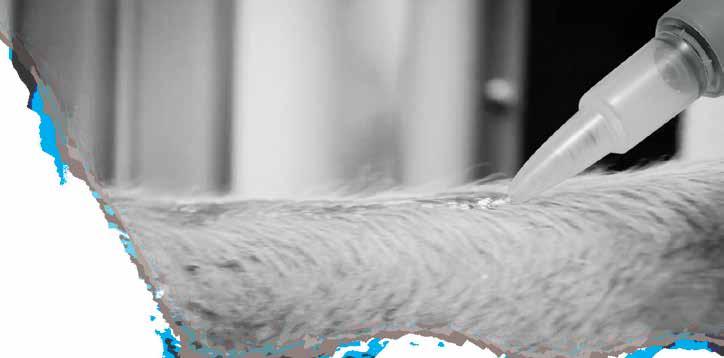
When you choose TURBO* Pour On, you’re not only getting the ultimate solution for parasite control you’re also receiving a cutting-edge tool to enhance your work productivity. The Metabo SSE 18 LTX BL Compact Cordless Sabre Saw is a valuable tool for farm operations, offering convenience, versatility, efficiency, precision, and safety.
PURCHASE 7.5Ls OF TURBO POUR ON AND RECEIVE A METABO SSE 18 LTX BL COMPACT CORDLESS SABRE SAW*.


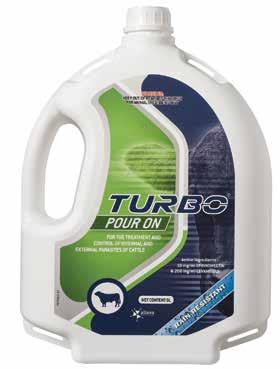

DAIRY WOMEN’S
Network has announced the finalists for its Regional Leader of the Year award.
The award was established in 2020 and is sponsored by FMG. It showcases inspirational women who demonstrate excellence at grass roots, leadership in their local community, and encompass Dairy Women’s Network’s values.
Dairy Women’s Network chief executive Jules Benton says it is “inspiring” to see the calibre of women providing leadership in the dairy industry and their communities.
“Each year the bar gets a little higher,” Benton says. “The dairy industry has traditionally been seen as male driven. These women are turning this stereotype on its head. They exemplify the DWN values and are making positive changes in their communities, and in the agriculture sector as a whole.”
The Regional Leader of the Year award will be announced on Thursday 2 May at the Gala dinner of DWN 2024 Conference.
The recipient will receive a registration

to the Dare to Lead programme based on the research of Dr. Brené Brown.
LEILANI LOBB
Contract milker and Canterbury DWN Regional Leader Lobb grew up on a dairy farm.
She went on to complete a Bachelor of Agriculture at Lincoln University and then put her knowledge to work, working at the assistant manager/2IC on a 180ha, 700-cow farm near Ashburton.
At age 22, she was named runner up in the

Dairy Trainee category at the 2022 Canterbury/ North Otago Dairy Industry Awards.
A strong advocate for female farmers in the industry, Lobb is described as solutionfocused and passionate about both dairy and Dairy Women’s Network.
She puts her “hand up for everything from applying for funding and collateral to coming up with ideas for events and attending everything we do”.
REBECCA O’BRIEN
In addition to
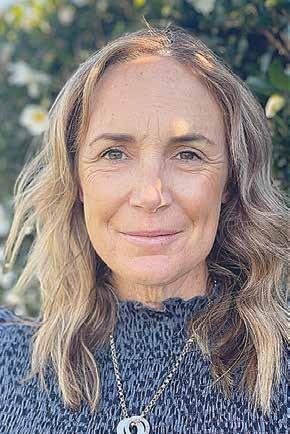
“They exemplify the DWN values and are making positive changes in their communities, and in the agriculture sector as a whole.”
sharemilking a 900-cow herd on two dairy farms, Eastern Bay of Plenty DWN Regional Leader O’Brien has proven instrumental to the organisation.
She is described as creating a sense of inclusivity among members, community clubs, and has supported
businesses and the Dairy Women’s Network team.
She mentors staff training with PrimaryITO, volunteers in her local community and is involved with the NZ Dairy Industry Awards.
Her constant presence in the community, wordof-mouth marketing and her ability to network

has been attributed to an increase in the number of participants at DWN events in the Bay of Plenty.
O’Brien and husband Scott were named Share Farmers of the Year at the 2022 Bay of Plenty Dairy Industry Awards and in that same year were awarded the DairyNZ People and Culture Award at the national level.
LAURA WEST
A UK expat, West had never been on a farm until she moved to New Zealand and became a
sharemilker.
In 2021, the pair purchased a farm, milking 210 cows in Taranaki.
West is a committee member on the organizing committee for the 2024 Dairy Women’s Network conference “Enhance, Elevate, Evolve”.
She is described as someone who is dedicated to leading and encouraging other women to attend DWN events and seize opportunities within the sector.



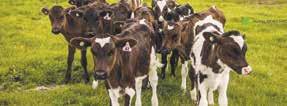
WINNERS OF DairyNZ’s Sustainability and Stewardship awards in the Ballance Farm Environment Awards have their eyes firmly fixed on progressing a positive future for New Zealand dairy.
The winners range from large inter-generational farms to small thriving farms. A common theme is the farmers’ long-term strategic approach, complementing their day-to-day sustainability actions.
Environmental work on the farms includes extensive native tree planting, protecting wetlands and using data to
guide many decisions including around emissions reduction and water quality. There’s also a strong focus on efficiency, productivity, innovation, technology and farm teams.
DairyNZ chief executive Campbell Parker says the awards DairyNZ sponsors at the regional events recognise leading dairy farmers who are innovating and running sustainable and profitable farm businesses.
“Farming systems are becoming increasingly complex with changing technology and new challenges on the horizon.
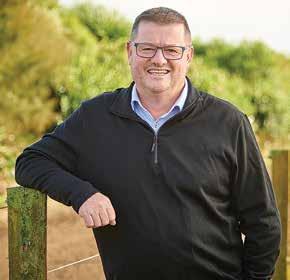
It’s great to see farm ers throughout New Zea land future proofing their businesses. It’s critical New Zealand dairy farm
DAIRYNZ SUSTAINABILITY and Stewardship Awards 2024 winners:
Northland: GREG & Claire Collins, Emerald Hills, Dargaville. Strategic planning, being adaptable and thinking outside the box are three reasons this small Dargaville dairy farm is both profitable and environmentally friendly.
Auckland: Sam Waugh, NZ Young Farmers’ Donald’s Farm, Whitford. The farm doubles as a commercial dairy farm and outdoors classroom for city school students teaching them about the primary sector and environment. It is both profitable and sustainable.
Waikato: Brad Hancock, Hancock Farms, Paterangi. Brad is the fourth generation in his family to farm in the Paterangi area. Careful strategic planning has created a profitable, efficient and flexible farming system. Sustainability work includes native planting to create a bird corridor.
Bay of Plenty: Jonathon Boyle, Four Oaks Farm, Pongakawa. This multigenerational farm has an increasing focus on biodiversity, with a 2ha wetland and native plants now covering 30ha of the 270ha property.
Horizons: James, Debbie, Dave and Jan Stewart of Stewart Dairylands, Hiwinui. The Stewarts are guided by a strong sense of family history and see the land as a precious commodity they treat carefully so it’s in better shape for the next generation.
Greater Wellington: Jason Christensen, Fernhill, Masterton. To help protect the environment and increase production, the farm team uses a range of environmental initiatives including
trialling new technologies.
Canterbury: John Wright and Rich ard Green, Wainono Dairy, Fairlie. The farm uses technology and data to build a complete picture and guide decisions. Enhancing the environment is a prior ity, including extensive planting and careful planning around winter graz ing and adverse weather events.
Otago: Justin Pigou, Neill Casey and Matt Hamilton, Waitepeka, Pāmu Farms, Romahapa. The farm manage ment team is highly conscious of the need to continually adapt practices to enhance the environment, soil, animals and the lives of their staff.
Southland: Mike and Kirsty Bodle, Braintra Farms, Hokonui. The farm’s overarching goal is to achieve sustain able, consistent milk production, while creating a business that nurtures the personal growth of the farm owners, staff and other motivated young farm ers. In a win for a mixed farm includ ing dairy, the Miller family of Roslyn Downs, Glencoe were the Southland Regional Supreme Winners. Their 1034ha dairy, sheep and beef operation is led by brothers Jason and Quentin and Jason’s son, Andrew. The focus is on financial and environmental stew ardship, and production efficiency, so the business continues to prosper into the future.
As Regional Supreme Winners, the Stewart and Miller families will be con sidered for the Gordon Stephenson Trophy, to be presented at the New Zealand Farm Environment Trust’s National Sustainability Showcase on 20 June at Claudelands Event Centre in Hamilton.
remain resilient while continuing to produce sustainable and competitive milk,” Parker says.
“DairyNZ’s involvement in the Ballance Farm Environment Awards reflects our role supporting our farmers with research, technology and innovation to stay ahead of the curve. It’s also part of our partnership approach with the New Zealand Farm Envi
DairyNZ sees the awards as a great opportunity to continue supporting farmers to share their positive stories with the public, which has been building greater momentum over the past year.
Most of the DairyNZ Sustainability and Stewardship Awards 2024 winners took out multiple Ballance Farm Environment awards in their
Horizons Regional Supreme Award and seven other regional awards including innovation, biodiversity, people and business management.
On the Stewart family farm, native plants enhance the natural environment and there are solar panels in the dairy shed. Native corridors with walkways and a wetland area have been

ENQUIRIES:
THE CHAIR of the Dairy Environment Leaders, the president of the North Otago Federated Farmers, and a herd health veteri-
have contributed so much to the industry being nominated,” she says.
“A lot of the entrants have multiple skills across community, environmental, professional, and commercial,” she adds. “Based on this wide

narian are among those nominated for the Fonterra Dairy Woman of the Year award this year.
The award recognises a woman within the sector who has contributed to the sector with passion, drive, innovation, and leadership.
Previous winners include Donna Smit, current Dairy Women’s Network chair Trish Rankin, and former RuralCo chair Jessie Chan.
Smit, a Dairy Women’s Network trustee, says this year’s awards saw numerous high calibre entries.
“It is nice to see a good spread of capable grassroots farmers, inspiring leaders, and rural professionals who
variety of skills, the dairy industry is in good heart for the future.”
The recipient of the award will be announced on Thursday 2 May at the Gala dinner of the Dairy Women’s Network 2024 conference. They will receive a scholarship to be part of the Kellogg Rural Leadership Programme.
MYFANWY ALEXANDER
Originally hailing from Wales, Alexander came to New Zealand 18 years ago to intern on a dairy farm and fell in love with the country.
For the past decade, she has been contract milking on a 280ha, 920-
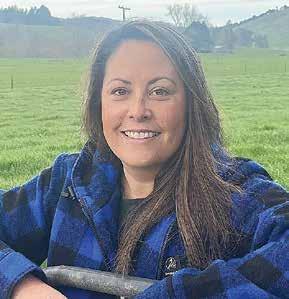
Valley.
Alexander is also a Dairy Women’s Network Regional Leader for North Otago and is president of the North Otago Federated Farmers.
She also sits on the governance group for the South Island Dairy Event.
In November 2023, Alexander co-founded The Sharefarming Consultants with Louise Gibson. The consultancy is aimed at improving the working relationships between sharefarmers and farm owners, offering monthly meeting facilitation services and recruitment consulting.
Alexander is described as “the embodiment of a positive role model”, and a hardworking, dedicated, caring and empathetic leader.
AMBER CARPENTER
A city girl, raised in Bucklands Beach, Auckland, Carpenter has
Now, 17 years later, Carpenter is at home on the farm, sharemilking 450 cows on a Paparimu dairy farm with a separated beef block.
She is the chair of DairyNZ’s Dairy Environment Leaders, and an ambassador for Farmstrong.
She has held leadership roles within the New Zealand Dairy Industry Awards, and is completing a Diploma in Agribusiness.
Carpenter is described as relatable, inspirational and a positive role model, able to connect both on a personal and group level
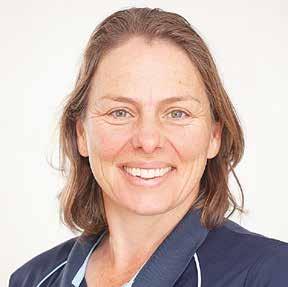
Before entering the dairy sector, Carpenter had worked for luxury fashion brand Karen Walker and had acted as a buyer for Farmers Trading Company.
Then, in 2007, she met her now-husband Fraser at a 21st party and added part-time farmer to her full-time commitments.

to inspire connection and trust.
KATRINA ROBERTS
A herd health veterinarian and farm consultant, Roberts has been involved in the dairy industry for more than 20 years, starting out as a vet student in 2002.
Since then, she has
completed a masters degree in vet epidemiology, specialising in heifer mastitis.
Roberts is actively involved in the sector, working on the redevelopment of the DairyNZ InCalf programme
MICHELLE RUDDELL
Ruddell runs a largescale dairy farm near Whangarei and chairs the Northland Rural Support Trust.

and has been on the stakeholder group for DairyNZ’s body condition score accreditation programme and DairyNZ’s FeedRight programme.
She mentors young vets and is an InCalf Trainer with DairyNZ and a member of several steering groups.
For the past 20 years, she has volunteered with Cambridge Riding for the Disabled and is an active member of the Walton School Board of Trustees, netball coaching, and Matamata Pony Club.
Roberts is described as an excellent role model who is curious, open to self-improvement and giving of her time.
She has a history of working in varying leadership roles in regional and national organisations, including as a National Trustee for the Rural Support Trust.
She proved instrumental in the Northland dairy sector’s recovery in the aftermath of Cyclone Gabrielle.
Ruddell provided hands-on support for those affected by the storm, and facilitated responses between various agencies.
She is described as an articulate, inclusive, and confident leader, building relationships with ease. She is driven to support the people in her business, community, and sector.
As a leading diagnostics company that can identify the mastitis status for every cow in your herd we’re supporting this season’s dry-off with an UDDERLY AWESOME PRIZE PACK worth up to $3,500.
Head to our website or scan the QR Code to enter: dairysmart.co.nz/prizepack
LIVING LABS that bring together expertise at locations around New Zealand are among potential solutions identified by researchers to help the country move towards a more climate resilient future.
AgResearch scientists have floated the concept of these ‘living labs’ or regional hubs – similar to climate initiatives undertaken in other likeminded countries – that could serve as models for farming in a way that reduces greenhouse gas emissions and is adapted to the changing climate conditions.
The concept has emerged as one potential approach in a strategic look at New Zealand’s efforts to achieve climate resilience. The process saw scientists engage with numerous organisations and experts across
industry, government and interest groups.
“The strategy discussions we’ve had over the last couple of years with the various sectors have been incredibly useful in identifying and agreeing the key challenges and opportunities for building climate resilience,” says AgResearch principal scientist Cecile de Klein.
“The theme that has come through most clearly from these discussions is the need to ensure whatever we do to build resilience is integrated across the sectors and communities. For us as scientists, that means being alongside farmers and industries to understand the issues they face as they change the way they operate, as well as meeting government expectations through policy and the needs of communities that are affected by a changing climate.”

On the living labs/ regional hubs scenario, the scientists envisage a user-centric approach that recognises there is no single solution, and
different opportunities in different regions. Sites could act as bases to test, validate and refine complex climate solutions in a real-life context, while ensuring the work is grounded in the science and incorporates mātauranga Māori (knowledge) and Te Ao Māori principles. They see an opportunity to collaborate with living lab or regional hub programmes that operate in countries such as Australia and Canada.
The Canadian Living Laboratories Initiative brings together farmers, scientists, and other collaborators in a nationwide network to develop and test innovative practices and technologies to address environmental issues, including mitigating and adapting to climate change.
A core principle is a focus on farmers’ needs: “Farmers not only test the proposed innovations, they contribute knowledge and experience to their development and improvement at every step”.
AgResearch senior scientist Robyn Dynes says New Zealand already has some unique advantages when it comes to building climate resilience. It is a world leader on research that includes greenhouse gas measurement, life cycle assessment of agri-
cultural products, and development of greenhouse gas mitigations such as breeding low methane-emitting livestock.
“What came through clearly in our strategy discussions with those from related sectors is that we need to maintain our strengths in those research areas, but also have an increased focus on adaption to the changing climate and `futureproofing’ as best we can the farming systems that are so important to New Zealand’s economy and social fabric,” Dynes says.
“We also see scope in increased partnership on important areas like onfarm carbon sequestration, where farmers and industries can potentially make a difference on environmental impacts and potential future costs for their businesses.”

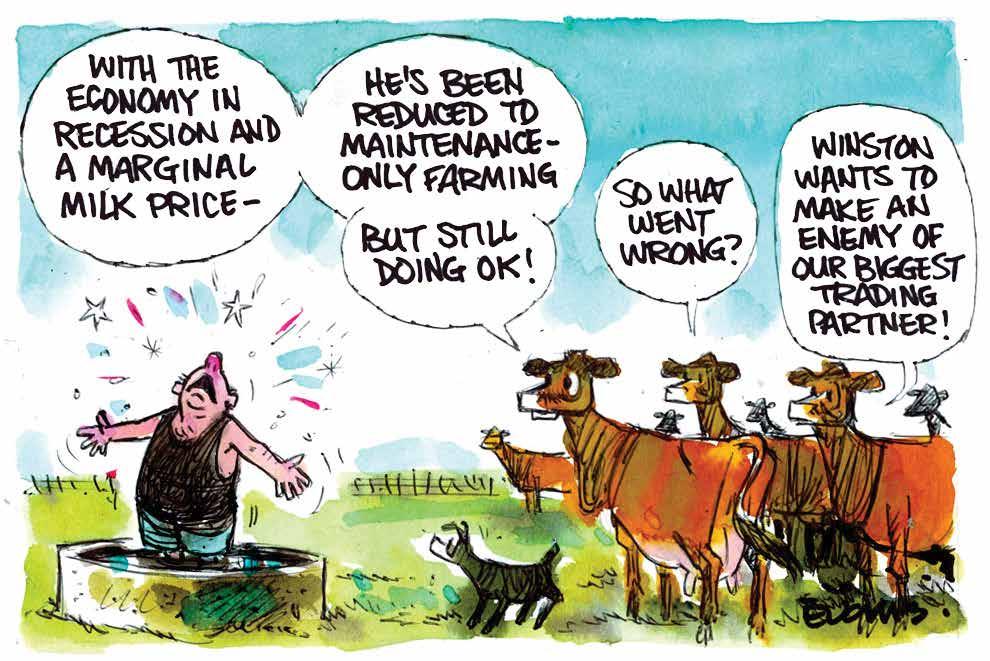
FOOD SECURITY is a sore point in the UK, as a direct result of its National Food Strategy, and there’s a lesson in this for other food producing nations like NZ: government meddling in farming is a very bad idea! To farm in the UK you need a special barn just to store all the paperwork in. The Strategy turned the red tape up a notch, rewiring the entire food production system, essentially to reduce greenhouse gas emissions. Farmers are paid incentives to take land out of production, reduce livestock numbers and plant non-food carbon-fixing crops. The result is a massive drop in food production in the UK, driving up food prices and reducing food security. So it was a relief to hear NZ’s unworkable winter grazing rules have been axed.
THERE’S AN outpouring of concern over the parlous state of one of our major industries. Columnists and politicians are agitating loudly for government intervention to bail out this vital industry – a foundation pillar of our country that props up communities and pays the government millions in taxes, yet finds itself, for now at least, beset by high costs, low returns and an uncertain future. Surely the outpouring of support and cries for bail-out money that Milking It refers to is for the struggling farmer sector? Not a chance! The handwringing and demands for a government bail-out are of course about, and driven by, the failing news media. Wouldn’t it be great if they cared as much about an industry that most years does actually prop up the economy?
The season for awards – yawn!!
IT SEEMS every bugger in this country can get an award these days.
Every obscure occupation, gender, whatever can apply or get nominated for some supposedly good deed regardless of their ability. And then there’s the official King’s Awards, which seem to include just about everybody but those in the farming sector. Yes, it’s nice and fluffy etc but it’s also bloody expensive. Going to all these awards would involve a farmer in more running around than a hard day’s yakka on a 20,000 hectare farm. In times of austerity, are such lavish functions the best use of cash? But rearranging the deck chairs on the Titanic at least made the sinking look good!
Takeover bid?
CANTERBURY MILK processor
Synlait is showing no sign of bouncing back from its financial doldrums.
The listed company’s share price has dropped to 50c/share, valuing the company at only around $100 million. The share price has been travelling south despite the company working hard to sell off under-utilised assets and reduce debt.
Milking It reckons all this means a takeover bid could be around the corner. Watch out for Bright Dairy of China; it already owns 39% of Synlait and could easily fork out a couple hundred million to buy the company outright.
The Chinese know how to run successful dairy companies in NZ; just look at Westland Milk, which reported a record revenue of over $1b last financial year.
IN RECENT years farmers have been crying foul of unworkable and expensive regulations.
The avalanche of regulations around water and environment unleashed by the previous Labour government have been labelled by farmers as unworkable and confusing.
So, when the coalition Government last week announced a Bill to fast-track amendments to the Resource Management Act, farmers were overjoyed.
Federated Farmers went to the extent of saying that the announcement by RMA Minister Chris Bishop marks the end of ‘the war on farming’.
The rules imposed by Labour were harsh, to say the least.
Winter grazing rules would have required over 10,000 farmers around the country to get a resource consent just to feed a winter crop to their stock. Even if farmers had complied, the councils wouldn’t have had the capacity to process that number of consents.
Then there’s the flawed stock exclusion rules that currently require extensive sheep and beef properties to fence their waterways by July 2025. Fencing streams on extensive properties with low stocking rates has the potential to cost farmers hundreds of thousands of dollars, for very little environmental gain.
Federated Farmers freshwater spokesperson Colin Hurst says these impractical rules have been a complete nightmare since the day they were introduced and farmers will be pleased to see the back of them.
He rightly points out that farmers are always looking to improve environmental outcomes on their properties and to care for the land, but regulation needs to be practical, pragmatic and affordable.
Sadly, the current rules failed on all three counts – completely disconnected from the reality of farming, devoid of all commonsense, and heaped on a tonne of unnecessary costs for farmers.
market expectations, and respond to emerging biosecurity threats.
THE AGRICULTURAL
sector is facing a crisis, with forecasts for registering innovative animal and crop health products hitting an all-time low.
A decade ago, we were world leaders in pioneering innovation. Now forecasts say it will take five to nine years to bring a new product to market.
With a backlog of new product applications and less than 25% meeting statutory timeframes, the country is losing its competitive edge in a global market during an economic downturn. The consequences are farreaching, affecting our ability to reform, adapt to climate change, increase productivity, meet
New Zealand farmers and growers are pioneering and want to embrace innovation, but our country’s regulatory system is falling behind. The painful truth is that these innovative solutions are available in other countries, but many are not yet being registered in New Zealand.
Manufacturers of innovative products are saying they have lost trust and confidence in a system which many have been using for decades. Products already approved and being used overseas face significant challenges and delays to register here. With new products taking up to five years to register, with a 100 day statutory target, and minor product
changes taking more than year, with a 10 day target, New Zealand’s market is simply too small for delays of this magnitude, so they will invest and supply elsewhere.
The regulator in charge of assessing the environmental risks for new products, the Environmental Protection Authority (EPA), differs slightly from its global counterparts. The Ministry for Primary Industries, and sometimes WorkSafe NZ, also provides some assessment functions.
The EPA has challenges in processing new product applications, resulting in a backlog. Less than 25% of applications meet statutory timeframes, compared with 97.8% a decade ago, despite increases in funding.

According to the recent Sapere briefing to the Minister for the Environment on the EPA’s role and performance in assessing hazardous substances, clearing the current backlog will take between two to four years. Since the EPA is legally required to receive new applications, stopping them is not an
GOING TO THE FIELDAYS? Better make sure farmers know where you’ll be and what you have to offer, then.
option.
A focus on reassessing existing substances exacerbates the situation. The EPA is allocating four times more resourcing to reassessing products than to introducing new, environmentally-friendly chemistry into New Zealand. The number of planned reassessments has increased
significantly this year. This imbalance significantly impacts sectors within New Zealand’s primary industries, including horticulture, arable farming, and forestry.
The animal health and crop protection industries had a value of $24 billion to New Zealand. A 2019 NZIER report explains that New Zealand’s economy would lose up to $11.4 billion without crop protection products –and that crop production would decrease by 30%. This figure is much higher now.
Animal and Plant Health New Zealand and its members are charting a path forward by offering constructive solutions to government and key stakeholders, drawing from international insights and ideas.
The agricultural
sector is critical to our future, but we are a small market, with high investment costs to bring products to our shores. Other OECD countries are using safer, more effective, and less hazardous chemistry, bio products and other technology. We must avoid getting stuck in a bubble that could burst as the world around us moves on.
Without these reforms and leadership, we risk falling further behind in agricultural innovation, jeopardising export opportunities and sustainable practices. We need to shift the dial swiftly to create an environment conducive to innovation. The stakes are high, and the time to act is now.
FEATURE: 28 MAY
BOOKING DEADLINE: 15 May
MATERIAL REQUIRED: 21 May
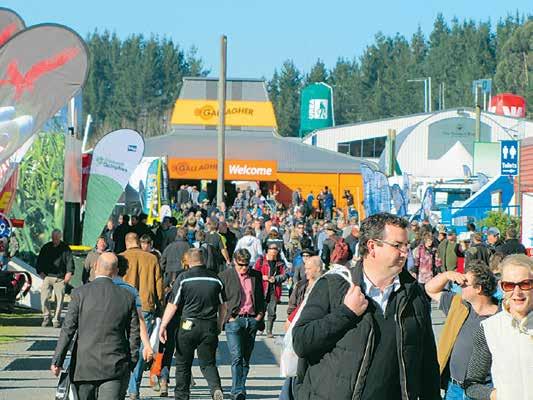
IN THE heart of New
Zealand’s rural landscape, where the rhythms of farming life intertwine with the challenges of disease management, you’ll find Tess Appleby, 37, whose recent experiences have called for both dedication and resilience.
As a regional partner with OSPRI (animal disease management agency), Appleby has spent the last four years of her professional life supporting and helping farmers and landowners stay on top of NAIT and tackle bovine tuberculosis (TB). She actively engages with farmers, iwi, and industry stakeholders, advocating for targeted education, increased awareness, and helping to break the stigma associated with disease-affected farms. Her efforts align with OSPRI’s commitment to supporting farmers and implementing effective disease management strategies.
In 2023, Appleby’s personal resilience was tested when Cyclone Gabrielle swept through the Hawke’s Bay, leaving devastation in its wake, including the loss of her home that she had only just bought four weeks earlier. Despite her personal challenges, Appleby remained steadfast in her commitment to supporting the farming community during difficult times.
REGIONAL PARTNERS at OSPRI play a vital role in educating and liaising with farmers, industry groups, and other key stakeholders to raise awareness of OSPRI’s programmes (TBfree, NAIT and M. bovis) and current operations.
They also undertake field and project work, collaborate with colleagues in disease management and veterinary epidemiology, and communicate planned operations and activities with stakeholders and community groups. Additionally, they represent OSPRI at public forums and committee meetings, build relationships with key stakeholders, organise industry events, and participate in OSPRI Committees.
Overall, the regional partner plays a crucial role in engaging stakeholders, promoting understanding and compliance with OSPRI’s initiatives, and fostering partnerships to enhance impact and reach.
“OSPRI were incredible in giving me the space I needed to deal with the devastation,” Appleby says.
“But I also wanted to be there for the farming community. Hawke’s Bay is my turangawaewae and it was incredibly hard to see how the devastation had affected its people and the landscape.”
Later that year, Appleby’s professional journey took a significant turn when her manager, Helen Thoday, recommended she take part in the Kellogg’s Rural Leadership Programme.
“I always thought it would have been out of my reach because it seemed to be targeted at senior management level,” reflects Tess. “But then, Helen suggested I do the course and supported me to give it a go.”
For Helen, she saw Appleby as the perfect candidate for Kelloggs.
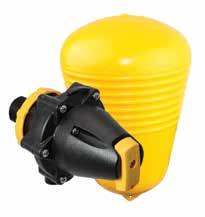
“Tess’s commitment to the TB story in the Hawke’s Bay is difficult to rival. She has experienced the impact of TB circulating in a community first hand and that experience is crucial in our recovery planning. I thought she’d get immense value from being part of a cohort which would help her gain a broader perspective of the agriculture industry, beyond her focus on the Hawke’s Bay.”
The six-month course provided Appleby with valuable insights and tools to delve into agriculture related topics, including her research project titled, “Eradicating Complacency in long term disease control”.
This project idea stemmed from her experiences during the Hawke’s Bay bovine TB outbreak in 2021-2022, a period that deeply impacted farmers in the

ONE SIGNIFICANT aspect of the findings was the importance of storytelling in creating empathy and understanding among stakeholders.
“Sharing people-centered stories and case studies can complement technical information and foster a deeper understanding of disease management strategies,” Appleby explained.
To combat complacency, it is important to keep the stories of bovine TB and other animal diseases top of mind. In some areas of the country, for example, they haven’t had TB and so they don’t know what it’s like to experience such a disease.
Some of the areas of education were around the importance of highlighting traceability and its role in tracing TB
region. Now that the disease was more under control compared to the outbreak in 2021, would farmers become too complacent if the disease
infected animals. Another suggestion for mitigating the spread of TB through animal movements was to provide information about where stock comes from and what questions were helpful to ask when buying from high-risk areas.
Appleby’s project highlights the importance of collaboration and proactive measures in disease management and serves as a reminder of the continuous commitment needed to tackle agricultural diseases and safeguard animal health in rural New Zealand.
“We must tell a different story, one that inspires action and collaboration. By working together, we can achieve TB-free herds and wildlife, ensuring a healthier future for our farming communities.”
was no longer prevalent in their area if it was no longer in their backyard?
A strong history of TB eradication in New Zealand has seen 1700
infected herds in 1995 down to less than 20 in 2024.
But the final push is now the most difficult and complex part of the
journey. To achieve eradication, it’s important to access areas which tend to be difficult to reach, treacherous or steep, or there is a lack of owner consent to undertake pest control operations.
“My research aimed to review and analyse the current understanding of the ag industry’s knowledge and perception of bovine TB among farmers and industry professionals,” Appleby explains.
Through surveys, thematic analysis, interviews, and literature review, Appleby explored various aspects of disease management strategies and the human-centred approach to disease eradication.
Respondents were asked what they thought the industry needs to be doing to keep TB relevant with farmers, how important they thought eradicating TB from New Zealand was, if levies were increased to eradicate TB in herds and wildlife sooner, would this be supported and were there benefits as a farmer to be TBfree in New Zealand.
There was shared agreement among the respondents on the importance of education, transparency and ongoing support for the TBfree programme.
There was also agreement that complacency was an issue and there remained a gap between those who had experienced TB in their lifetime and those who hadn’t.





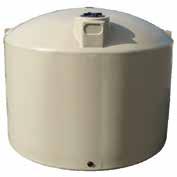

IN MY role as the head of sales & service at GEA Farm Technologies New Zealand, I genuinely believe that the future of dairy farming is happening right now in our backyard.
New Zealand is leading the world by shaping the future of our industry through innovation in the prevention of mastitis.
The GEA Farm Technologies Division in New Zealand encompasses our Dairy Equipment business (Milfos and Westfalia brands) and our Animal Health and Dairy Hygiene business (FIL brand).
The solutions we’re bringing to the table are top-of-the-line. Automatic teat spray technology, udder health products – these aren’t just tools; they’re weapons in the fight for healthier cows, better milk, and increased profits.
We’ve recognised that there is need to change the way we approach treating mastitis by looking at solutions that focus on maintaining herd health. There’ll still be

times we need treatment, but being proactive with prevention can really cut down on those cases happening in the first place.
Teaming up with Farm Medix, FIL is tackling the challenges in our dairy industry.
Natasha Maguire, chief scientific officer at Farm Medix, sums it up best: “We’re giving Kiwi farm-
ers the tools they need to tackle mastitis headon. From bulk milk to individual cow mastitis tests, we’re arming farmers with evidencebacked solutions to lower somatic cell count (SCC) and reduce clinical mastitis.”
The collaboration between FIL and Farm Medix has pushed their
mastitis prevention efforts to new levels.
We’re helping dairy farmers; we’re giving them the equipment and knowledge they need to stop mastitis before it effects a herd and at the same time champion sustainable farming.
The results speak for themselves. Farmers up and down the country

are seeing improvements; they’re seeing a transformation in mastitis management and farm profits, here are some examples:
• Tim Rivers, a farmer from Central Otago, witnessed a significant reduction in mastitis cases after working with FIL on mastitis prevention after calving, resulting in savings of around
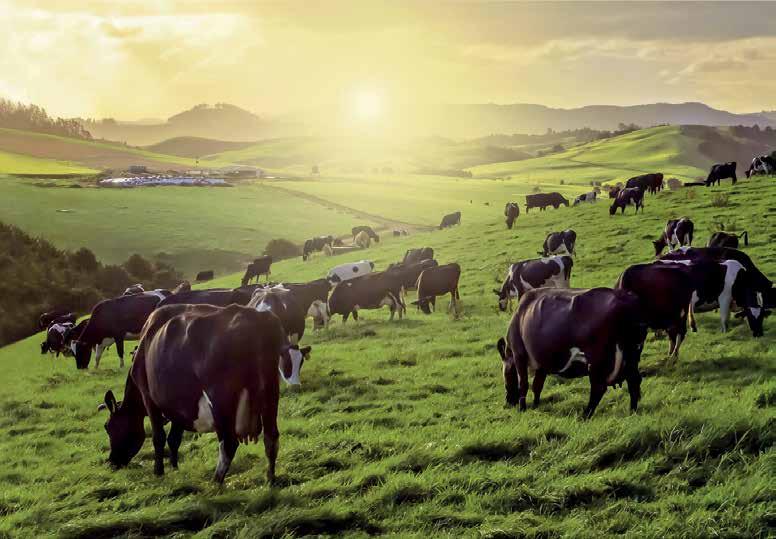

and enhanced milking efficiency with GEA’s automated mixing and inbail teat spraying.
• Bryan Holmes from Matamata lowered his farm’s SCC from 250,000 to 150,000 with forensic mastitis testing and improved teat spray protocols.
• Dean Malcolm, a contract milker from Canterbury, saved approximately $10,000 in six months by implementing GEA’s in-bail teat spraying, resulting in lower somatic cell counts and fewer clinical mastitis cases.
By focusing on animal health, keeping our cows’ teats tip-top, and simplifying the milking routine for the best outcome, lifting milk quality and herd productivity.
$49,000.
• Sarah Smart from North Otago achieved her farm’s lowest ever somatic cell count averaging 100,000 SCC and resolved a seven-year mastitis problem with forensic mastitis testing.
• Andrew Pritchard, a farmer from Taranaki, reduced his farm’s SCC from 150,000 to 90,000,
When it comes to sustainable dairy farming, GEA is leading the charge, not just in New Zealand, but worldwide. This is the next generation of dairy farming – improved profitability, greater flexibility, and healthier cows.
• Craig Lowry is head of sales & service from GEA Farm Technologies New Zealand.

UNDERSTANDING THE
nutritional needs of
springer cows is crucial for ensuring a successful transition resulting in improved cow health, productivity, and reproductive performance.
During the transition period, the cow’s dietary requirements undergo significant changes, making proper supplementation essential. In particular, springer cow feed supplements play a pivotal role in meeting their mineral requirements and minimising the risk of metabolic diseases.
Assessing the feed risk
When formulating diets for springers, it’s essential to formulate minerals that will stimulate calcium uptake and target the risk of metabolic disease at calving.
Pasture, while abundant in spring, poses the highest risk due to its high potassium content. On the other hand, hay and silage, particularly maize silage, present a lower risk and serve as valuable components of the springer’s diet.
Understanding nutrient proportions
Breaking down diet formulation involves careful consideration of various factors, including energy, protein, and fibre content. Springer cows require an energy component ranging from 100 to 120 megajoules, along with a protein content of approximately 14%. Fibre is critical as it aids in maximising rumen capacity and helps regulate metabolisable energy (ME) levels. It is most important that cows are
fed well before calving so they will have developed good rumen capacity prior to lactation.
One of the most critical aspects of springer cow nutrition is mineral supplementation. Phosphorus, calcium, and magnesium are essential minerals that play key roles in minimising metabolic diseases, maximising milk production, and aiding in successful reproduction. As well as containing adequate levels of these minerals in the diet, a successful transition feeding program ensures the stimulation of hormone release required to draw these minerals into the bloodstream.
Herbage analysis insights

metabolic diseases, farmers can promote smooth transitions, maximised milk production, and enhanced reproductive success.
Strategic supplementation for springer success
Understanding the importance of mineral supplementation in springer cow nutrition is essential for optimising herd health and productivity.
Ideal mineral levels and supplementation
Conducting herbage analyses on pasture, silages, and other components of the diet gives farmers valuable insight into the nutrient proportions of the diet. From here, mineral supplementation DCAD can be calculated accordingly. With this information, farmers can then tailor a mineral supplementation plan to their springer mob’s needs.
Providing a calcium, magnesium, and phosphorus supplement is vital for supporting the health and performance of springer cows. By addressing their specific mineral needs and minimising the risk of
By carefully formulating diets, assessing feed risk, and providing targeted supplementation, farmers can ensure their springer cows succeed during the critical transition period and throughout the season.
• Article by Agvance Nutrition
IN NEW Zealand, every dairy farmer worth their salt knows just how important it is to look after the welfare of their animals. The health of the herd directly impacts profit margins, which, in turn, determines the viability and sustainability of the farm.
Farmers who ignore the feed and nutrition management of their herd do so at their peril. Beyond the severe legal penalties awaiting those who choose to neglect the welfare of animals under their care, there is also a substantial opportunity cost to be missed should farmers not get the most milk production out of their herd, as underweight cows almost always result in poorer dairy yields and lower fertility rates.
By closely monitoring the nutrition levels in feed, farmers can start to take the guesswork out of milk solid production and animal health issues – but it doesn’t start and end at the food supply.
A comprehensive approach to nutrition management should consider the many factors that play into the wellbeing of a dairy cow – from pasture management, to supplementation and water supply, to the availability of feed pads and shelter – there is a lot that can be done to increase the productivity and welfare of working cows, safeguarding the sustainability of the farm by providing healthy profit margins in the process.

Here are some tips to help improve the feed and nutrition of your dairy farm.
Pasture management is a key part of a comprehensive approach that ensures dairy cattle are supplied with the right amount of nutrition to meet their needs.
While it is a very broad subject in itself, good pasture management has six key points to follow, as highlighted below:
Rotational grazing
The implementation of a rotational grazing system allows for optimal utilisation of the pasture, allowing forage to recuperate and grow back in time. This ensures that cows have access to fresh, high-quality forage, while reducing the risk of overgrazing.
By maintaining the soil fertility of pastures through regular soil testing and applying the appropriate fertilisers, cows are supplied with nutritious grasses for foraging.
Weed control
Weeds reduce the quality of pasture and compete with desirable forage, such as grasses. Implementing an effective weed control program (such as herbicide application or mechanical weed removal) helps to maintain the quality of the pasture.
Irrigation
A timeless farming technique practised since 6000 BC, irrigation provides a steady flow of adequate water throughout fields, allowing pastures to reach their potential, thereby providing nutritious forage for cows.
Irrigation is especially important during dry spells.
Rest periods
As a subset of rotational grazing, the idea of giving pastures adequate rest periods for pasture regrowth is crucial to maintaining a sustainable grazing system. Rest periods should be long enough to allow for adequate regrowth, but not too long that the pasture becomes too mature, and therefore less nutritious.
Monitoring and consultation
By regularly monitoring pasture quality, quantity, and cow performance through Body Condition Scores, farmers can make informed decisions about pasture management and feeding strategies, removing the need for guesswork. Consultation with a veterinarian or qualified
dairy cattle nutritionist may also be appropriate for farmers to determine the best nutrition program for their herd’s needs.
A feeding pad is a hard-surfaced area designed for feeding and managing dairy cows. Covered feed pad barns, such as those supplied by SmartShelters, help to prevent against the negative effects of heat stress by keeping the sun off of cows while feeding and keeping their body temperatures cool and regulated.
There are several other ways in which a feed pad improves the nutrition management of dairy cows:
Reducing pasture damage
Cows that are continuously fed on pasture may overgraze and damage the pasture, which is especially true in fields that are harder to monitor (either for access, distance, or other geographic reasons). Using a feeding pad can help reduce pasture damage and allow for optimal pasture utilisation.
Monitoring
Feeding pads provide a controlled environment for feeding, enabling easy monitoring of feed intake and cow behaviour. This can help farmers’ lives easier in that they can then make informed decisions about nutrition management, feed intake, observe individual cows for ailments, and easily monitor the overall health of the herd.
• Article sourced from www.smartshelters.co.nz
DAIRY FARMERS in the lower North Island are working on protecting next season, according to Federated Farmers dairy chair Richard McIntyre, who farms just north of the Horowhenua town
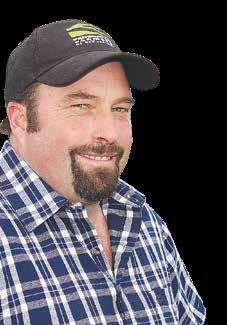
ship of Levin.
The area has been suffering from a drought for the past few months, but in the last few weeks there has been some rain, which McIntyre says has helped the grass that was lying dormant to start growing again.
But he warns that some dairy farmers who were in the black financially before the drought, may now at the end of the season find themselves in the red.
He says while the pastures may look greener than they have been, the reality is that pasture covers are low and most farmers are still feeding out, cutting into their winter supplements.
“For example, our autumn calvers have not eaten a blade of grass for the last month. They are just in a paddock being fed supplement because that is how we can feed them the best now,” he says.
McIntyre says a lot
of farmers are looking at their pasture which may have died and deciding whether they need to over sow to get things up and running. He says some farmers are looking at drying off some of their cows early with the aim of meeting the 1st of June target for their pasture covers. Others he says will be purchasing more supplements and applying nitrogen strategically to carry them through the winter and to make up for the reserves they have already cut into.
But McIntyre says there has been a positive side to the drought.
“It’s been relatively localised and there are areas not too far away where there are surpluses of feed. So, it’s been easier to source feed than in other years and the price has been more reasonable as there is a lot of surplus feed available and less demand for it.
“A lot of additional maize has been grown this year that hasn’t got a home and so it’s been possible to buy this at a reasonable price.”
On the negative side, McIntyre says farmers like him have had to buy extra feed they didn’t budget for, but the positive side is that the cost of feed is cheaper.
Looking to next season, McIntyre says this is the time of the year that everyone takes out their crystal ball and tries to predict what the payout may be. He says he favours a cautious conservative approach and says he’s working on a budget of the payout being around the $8 mark.
“You can always handle extra money coming into your budget but it’s hard to find money when things go wrong,” he says.





for those wanting a 50cm row width; or eight units working at 75m row spacing.
Pudama principle delivers spot placement of fertiliser in maize, rather than continuous fertiliser placement. As a result, it has the capability to deliver a 25% saving on starter fertiliser, with no noticeable loss of yield.
With a patented air-shot and brush mechanism that preserves fertiliser quality, Pudama is available on the Optima TF Profi maize drill model, as well as the folding frame Optima F model, where its 6m folding frame can carry up to 12 SX seeding units
With its Pudama precision drilling solution, Kverneland claims to have set a new standard in maize seeding, with the amount of starter fertiliser reduced by at least 25%.
Pudama stands for a systematic, focused spot fertiliser application during maize sowing, using the patented airshot and brush mechanism, enabling precision sowing of maize with the synchronised placement of a starter fertiliser deposit exactly next to the maize seed where it is needed.
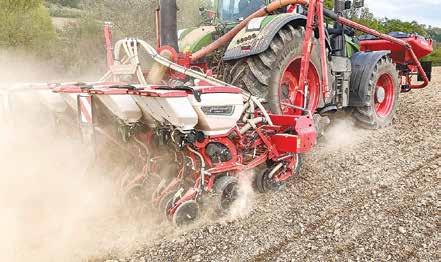
Using this technology, scientists of the Institute for Construction and Agricultural Machinery Technology of Cologne have proven that at least 25% of the starter fertiliser can be saved, compared to conventional continuous band fertilisation, while ensuring overall yield potential is still maintained.
A series of trials carried out in the UK during the 2023 season have supported a further 30 Europe-wide trials. Using an 8-row trailed Optima TF Profi equipped with Pudama, the UK testing compared the results at harvest to maize grown with conventional fertil-
iser placement.
A one-hectare plot grown conventionally produced a dry matter yield of 16,412kg, against Pudama’s 16,376kg yield.
In real terms, that represented a significant cost saving on fertiliser, for a difference of only 36kg of dry matter.
The Pudama technology was originally incorporated on the trailed frame Optima TF Profi and now the folding frame Optima F combined with the front hopper f-drill. The parallel-hydraulic folding frame of the Optima F offers a 6.0m tool carrier capable of carrying up to 12 SX seeding units at 50cm, or eight units at
DIGITAL TECHNOLOGY in agriculture over the last decade has moved from “that’s interesting” to a “must have” today, although the rapid growth over the last few years seems to have been a scattergun approach, rather than a well thought out implementation.
AGCO appears to be the latest company to recognise this, so has set out to place all its digital offerings into one basket and created the brand name PTx. The name itself is rooted in AGCO’s heritage. The com-
pany notes that the union of precision agriculture (P) and advanced technologies (T) will multiply (x) the potential advantages created for farmers through seamless operation.
PTx is intended to serve agriculturalists on a global basis using three different approaches, the first centred around establishing specialised precision dealers who will help farmers retrofit almost any make or age of equipment which they may already own with up-to-date technology.
PTx will expand its contacts and involvement with more than 100 OEM partners which have the potential to integrate products from the PTx portfolio directly at the factory. Similarly, new machines from AGCO’s own Fendt, Massey Ferguson and Valtra brands will also offer factory-fit technology from the PTx portfolio.
Overseeing the project for AGCO is Seth Crawford, senior vice president and general manager for the new brand, who will lead the new organ-
• Direct PTO driven (no gear boxes or belts)
• Heavy duty construction (including drive shaft)
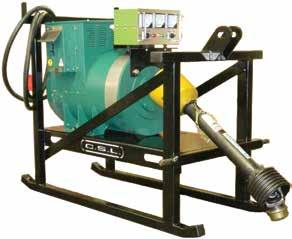
• Dials facing cab (one person operator)
• Designed and assembled locally for rugged conditions!
• Three sizes to suit all sheds: 37.5KVA, 62.5KVA and 93.75KVA
• Silent diesel available by pre-order only
isation as a mixed-fleet precision ag platform that is applicable in all markets.
Crawford said: “Through the PTx portfolio offerings within Precision Planting and PTx Trimble, we’ll provide seamlessly compatible, powerfully simple precision ag-solutions.”
The thinking behind this new division is that farming with digital technology is easier if the wide variety of platforms can actually speak to each other, rather than operate in isolation, and when they are designed and sup-
75cm spacing.
Said to be suited to the needs of larger farmers and contractors, the Optima F offers performance in the field, rapid folding and the ability to be stored in transport position. The KV Optima F combined with the f-drill front-hopper for the fertiliser transport is said to offer manoeuvrability, optimum weight balance and precision seed drilling with high daily outputs.
Pudama on Optima F was introduced at Agritechnica 2023 and will be available as a limited series from in 2024, whilst Pudama on Optima TFprofi is already fully available.
ported by engineers who understand agriculture.
The recently announced joint venture with Trimble will continue as planned with AGCO holding 85% of the new operation and Trimble the remainder. In line with other manufacturers, PTx is to be considered as having the same status as the mainline brands, which for AGCO means it joins Massey Ferguson, Valtra and Fendt in AGCO’s line up.






OVER THE last halfdecade, digital technology has appeared to be the “must-have” for tractor and machinery companies, who believe that bringing IT to tractors and farming will offer its customers huge benefits.
Their diverging directions has led to a myriad array of systems and applications that are often useful in bringing efficiencies, while also
company explains that the focus was to develop a common platform linking all relevant portals with a simple, userfriendly interface which provides access to all areas of information. To do this, Claas has brought together the machine management and fleet management aspects of farm mechanisation and now considers them as a whole.
To further enhance the digital journey, as well as access for farmers and dealers, there is
Harvesting and tractor manufacturer Claas has come to appreciate that the general mix of competing products, in some cases, might hamper, rather than encourage adoption of digital technology, so in response, has developed Claas Connect.
engendering brand loyalty, but often doing little to simplify the already complex business of farming.
Harvesting and tractor manufacturer Claas has come to appreciate that the general mix of competing products, in some cases, might hamper, rather than encourage adoption of digital technology, so in response, has developed Claas Connect.
The German-headquartered company describes this as a single, cloud-based platform that brings together the full range of digital applications, from yield mapping to machine servicing and even digital licence expiry notification.
Although not entirely new, the latest revamp and upgrades are significant in further embracing all the facets of the farming operation which involve machinery. The
also the opportunity for third parties to access certain parts of the data that might be desirable or necessary. This would include agronomists, who will be able to take geodata, such as yield and soil maps, to recommend fertiliser applications based on this data, helping to bridge the yawning gap between collecting field data and applying the information it contains to input recommendations.
On the machine management side, it appears that new tractors and harvesters will be supplied with a five-year Machine Connect licence that enables automatic updates and service interval alerts, as well as recording any work undertaken. The system also allows other brands to be integrated, allowing an overview of position, fuel levels and machine status to be displayed on
Check out our websites
www.ruralnews.co.nz

www.dairynews.co.nz
the same screen. This cross compliance extends to meta data for precision farming, such as field boundaries, though the use of the SHAPE or ISO-XML file formats. Looking ahead, Claas says further upgrades to its software will allow greater data sharing beyond the single individual Claas ID, simplifying task planning, implementation and documentation.

Dieci Agri-Pivot Telescopic Telehandlers incorporate the manoeuvrability and visibility benefits of a loader, with the height and lift capacities of a telehandler.
Contact us today about our new and used stock machines with low 3% finance options.
NEW Agri-Pivot T90
• 138 Hp engine
• Vario transmission
• Max. lift capacity 4.1 t
• Max. lift height: 5.7 m
USED
Agri-Pivot T80
• 129 Hp engine
• Hydrostatic transmission
• Max. lift capacity: 3.5 t
• Max. lift height: 5.2 m
• Hours: 1300
USED
Agri-Pivot T70
• 115 Hp engine
• Hydrostatic transmission
• Max. lift capacity: 3 t
• Max. lift height: 5.2 m
• Hours: 2630



PASTURE’S